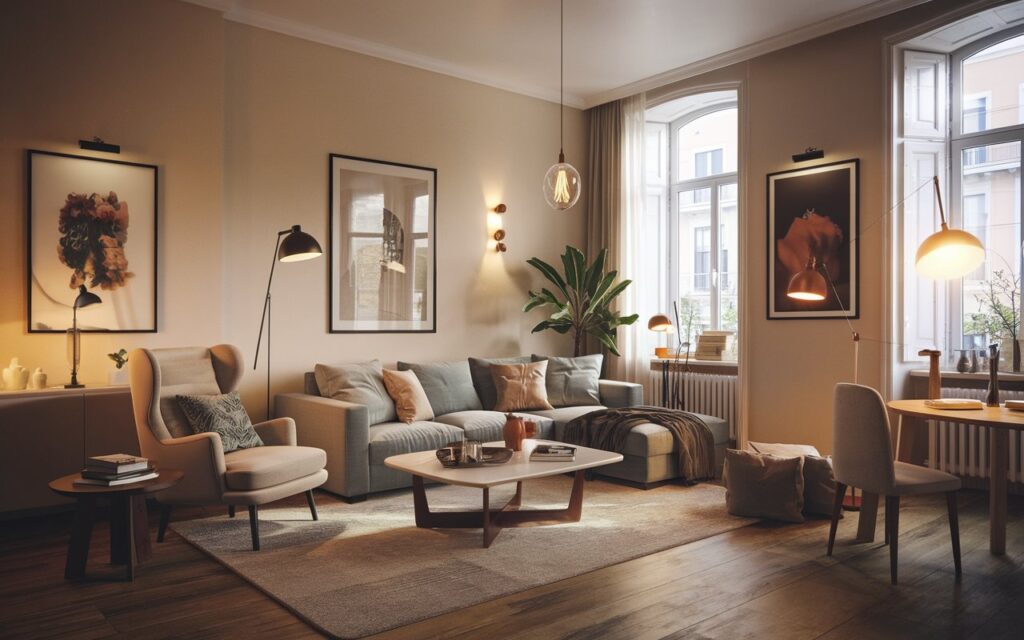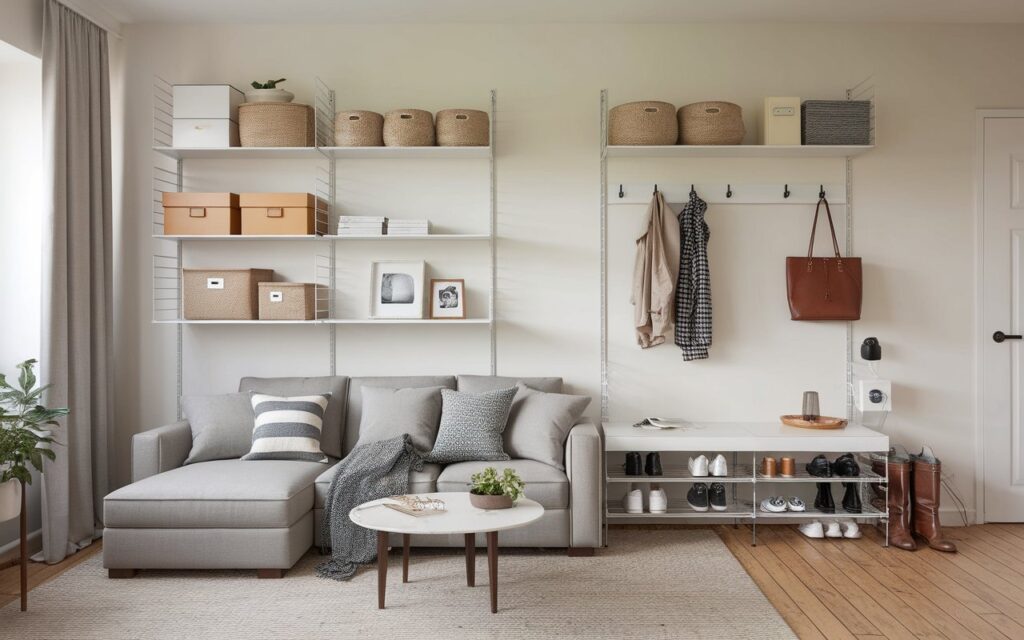Decorating your apartment is more than just filling the space with furniture and decor; it’s about creating a space that reflects your personality, meets your needs, and feels comfortable. Whether you’re setting up your first apartment or revamping your current one, there are several common interior design mistakes that can derail your vision and leave your space feeling cluttered or mismatched. To help you design a beautiful, functional home, we’ve put together a list of the top 5 interior design mistakes to avoid in your apartment. By understanding these pitfalls, you’ll be able to create a space that is both stylish and practical.
1. Overcrowding Your Space with Furniture
One of the biggest mistakes you can make when designing your apartment is overcrowding the space with too much furniture. While it’s tempting to fill every inch of space, a crowded room can feel cramped, cluttered, and uncomfortable.
Why It’s a Mistake
When there’s too much furniture in a room, it can make the space feel smaller and less open. It also creates a barrier to easy movement, which can make the apartment feel chaotic instead of relaxing. Your apartment should be a place where you can move around freely without bumping into things.
How to Avoid It
Start by measuring the space before buying new furniture. Choose a few key pieces that are essential and ensure that they fit well in the room without overcrowding it. Aim for balance and leave some space between the pieces to allow for easy movement. Consider multifunctional furniture, like a sofa bed or a storage ottoman, which can help you make the most of your space without making it feel crowded.

Pro Tip: Create a floor plan layout on paper or use an online tool to visualize how the furniture will fit before committing to anything.
2. Choosing the Wrong Colors
Colors play a huge role in the atmosphere of a room. The wrong colors can make your apartment feel darker, smaller, or even chaotic, while the right shades can open up a space and create a calm, inviting environment.
Why It’s a Mistake
Choosing colors that don’t match or clash with each other is an easy mistake to make, especially when you’re excited to decorate. If the colors are too bold or mismatched, they can create a feeling of discomfort. Additionally, using dark colors in small spaces can make the room feel even smaller and closed off.
How to Avoid It
Opt for neutral colors like beige, light gray, and soft whites for larger areas such as walls and floors. These tones help make the space feel larger and brighter. For smaller accent pieces like throw pillows, curtains, or rugs, you can add pops of color, but make sure they complement the overall palette.

Pro Tip: If you’re unsure about how colors will look together, try using a color wheel or online color tools to help guide your choices.
3. Ignoring Proper Lighting
Lighting is often an overlooked element of interior design, but it can completely transform a space. Bad lighting can make a room feel dreary or too harsh, while the right lighting can create a warm, inviting atmosphere.
Why It’s a Mistake
A common mistake is relying on only one source of light, like a single ceiling light. This can leave your space feeling unbalanced. Overhead lights can sometimes cast harsh shadows, while lack of lighting in certain corners can leave the room feeling dim and unwelcoming.
How to Avoid It
Layer your lighting by combining different types, such as overhead lights, floor lamps, table lamps, and wall sconces. Try to create a balance of task lighting (for reading or working), ambient lighting (to set the mood), and accent lighting (to highlight artwork or decorative features). Dimmer switches are also a great way to adjust the lighting based on your needs and the time of day.

Pro Tip: Use warm-toned bulbs for a cozy, inviting atmosphere, or bright white bulbs if you need to create a more energetic space.
4. Not Considering Scale and Proportions
Another common design mistake is not paying attention to the size and proportions of furniture and decor in relation to the room. When the furniture is too large or too small for the space, it can throw off the entire look and feel of the room.
Why It’s a Mistake
A huge couch in a small living room can overwhelm the space and make it feel cramped. On the other hand, tiny furniture in a large room can make the space feel empty and underwhelming. Balancing the scale of your furniture is key to maintaining a harmonious environment.
How to Avoid It
Before purchasing furniture, make sure to measure the room and consider how much space you want to leave for walking paths and functionality. Opt for pieces that are proportionate to the size of the room. For example, in a small room, consider a sleek sofa with a slim profile instead of a bulky sectional.

Pro Tip: Use the “furniture sizing rule” to ensure that the seating area is well proportioned. Each piece of furniture should complement the scale of the room and the other furniture in it.
5. Forgetting About Storage and Organization
One of the easiest ways to ruin the aesthetic of your apartment is by ignoring storage and organization. Clutter can make even the most beautiful space look chaotic and messy.
Why It’s a Mistake
Clutter not only affects the way your apartment looks but also how it functions. Piles of clothes, books, or random items can quickly overwhelm a space. If you don’t have enough storage solutions, you’ll find yourself scrambling to keep everything in order.
How to Avoid It
Incorporate plenty of storage solutions into your design. This could include using storage baskets, stylish shelves, or multi-purpose furniture. If you’re short on closet space, consider investing in space-saving furniture like under-bed storage or storage ottomans. Regularly declutter and get rid of things you no longer use to keep your space feeling fresh and organized.

Pro Tip: Add built-in storage like wall-mounted shelves or cabinets to make use of vertical space and reduce clutter in smaller rooms.
Final Tips
- Take your time when selecting furniture and decor. Don’t rush into decisions—make sure everything fits your vision and your space.
- Don’t be afraid to ask for help or get second opinions. Sometimes an outside perspective can help you see things you might have missed.
- Most importantly, enjoy the process! Your apartment is a reflection of you, so make it a space you love.
By keeping these pointers in mind, your apartment will not only look great but also feel comfortable and well-designed for everyday living. Happy designing!




